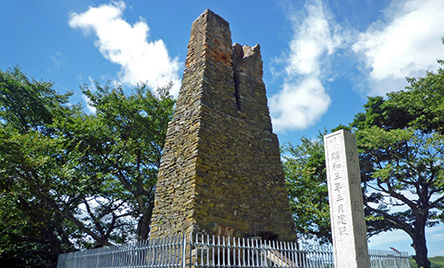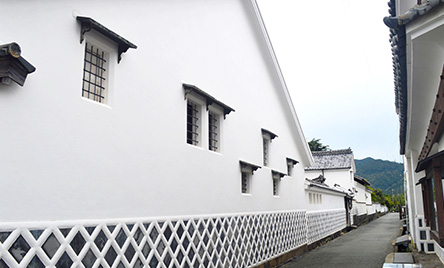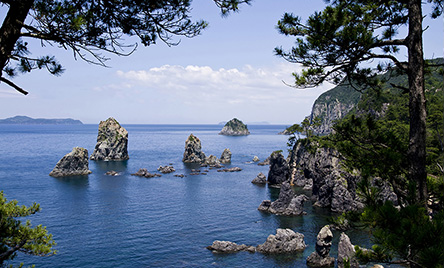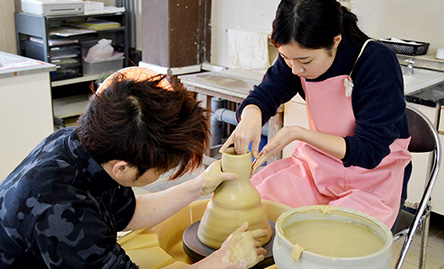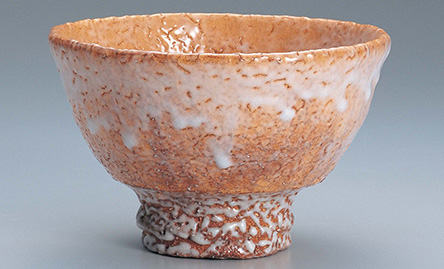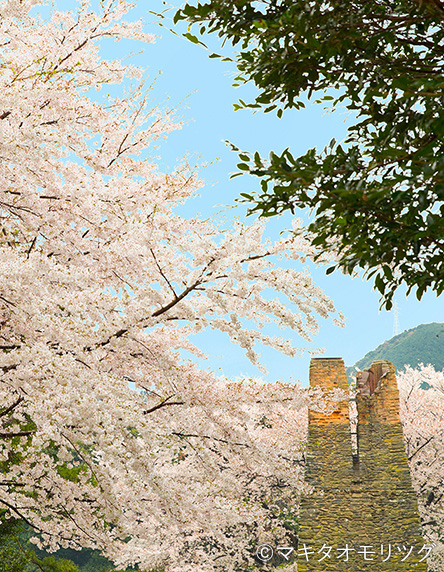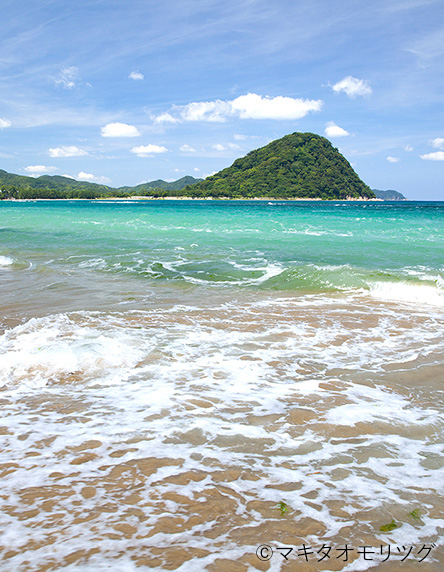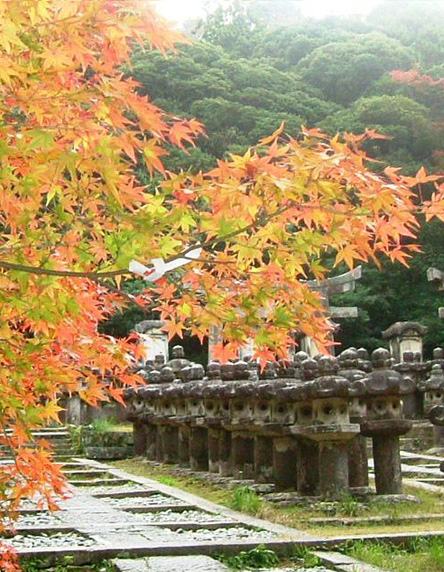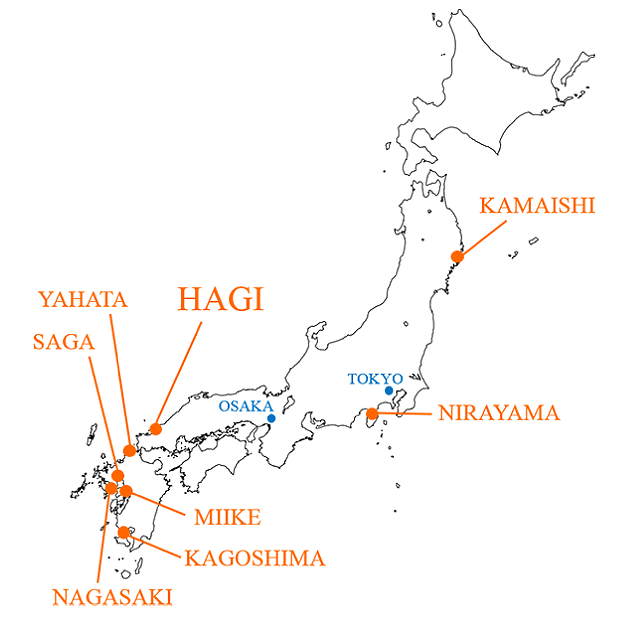

Japan’s rapid modernization was founded on iron and steel, shipbuilding and coal mining. “Sites of Japan’s Meiji Industrial Revolution” tells the history of how Japan adapted Western technical knowledge to become a “Great Manufacturer.”
This serial nomination encompasses 23 sites across 8 prefectures and 11 cities, located mainly in Yamaguchi Prefecture and Kyūshū. In the Hagi area, there are five proto-industrial heritage sites based on imported technical expertise.
About Serial Nomination
Serial nomination provides for sites dispersed across a wide geographical area to be considered together as a historical or cultural group. This allows disparate sites with universal value to be nominated from all across Japan.
Hagi Reverberatory Furnace
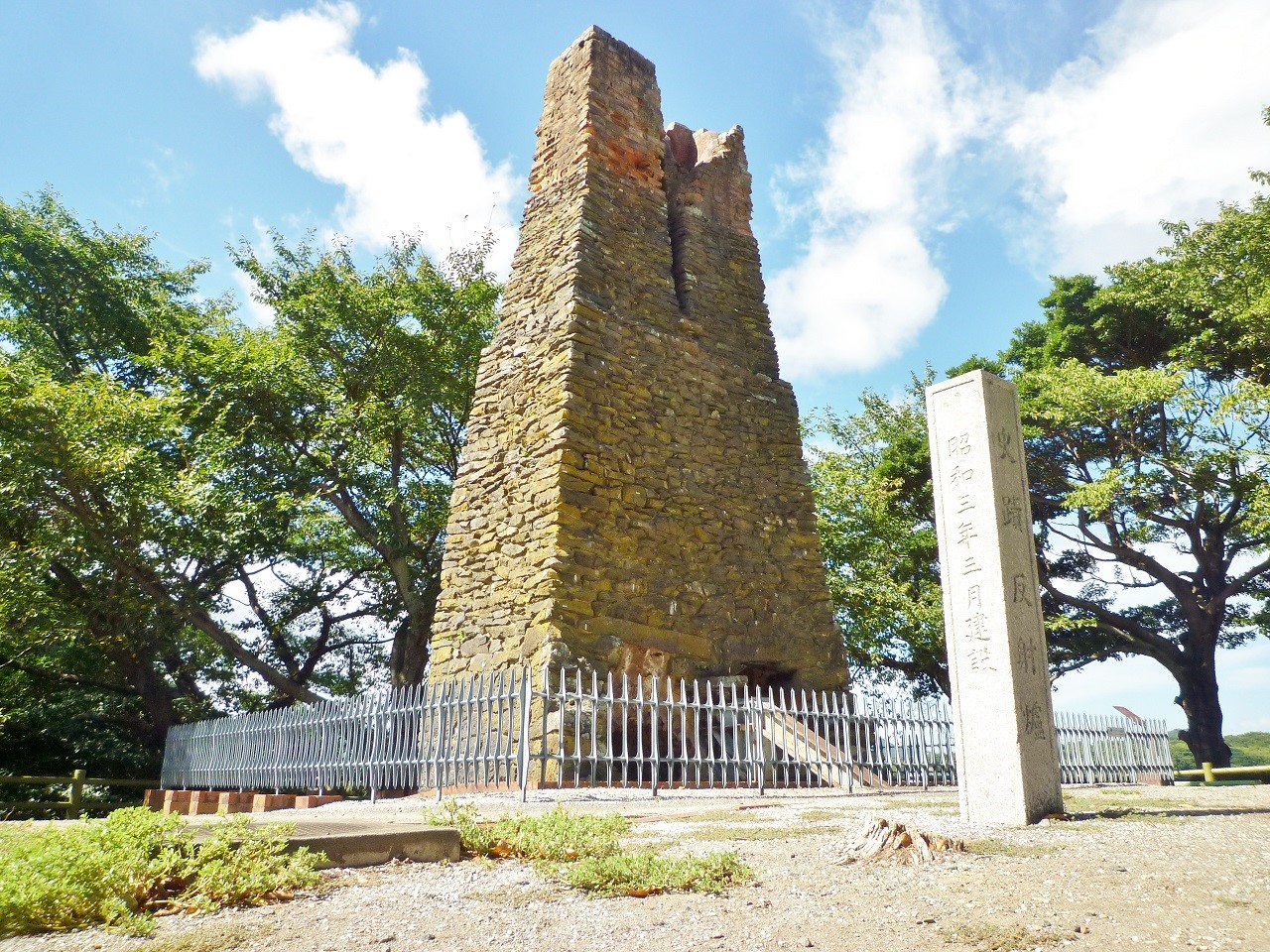
The Hagi Domain made efforts to introduce the reverberatory furnace, a smelting furnace necessary for casting iron cannons, as part of the reinforcement of coastal defenses. The ruins remaining today include only the chimney portion, with a height of 10.5m, built mostly of andesite. As we can confirm that the reverberatory furnace operated temporarily in 1856 from the record of the Hagi Domain, the Hagi Reverberatory Furnace is thought to have been constructed as a test.
The ruins surviving today, which exist only in Nirayama (Shizuoka Pref.) and Hagi, are highly precious in the history of industrial technology in Japan.
Ebisugahana Shipyard
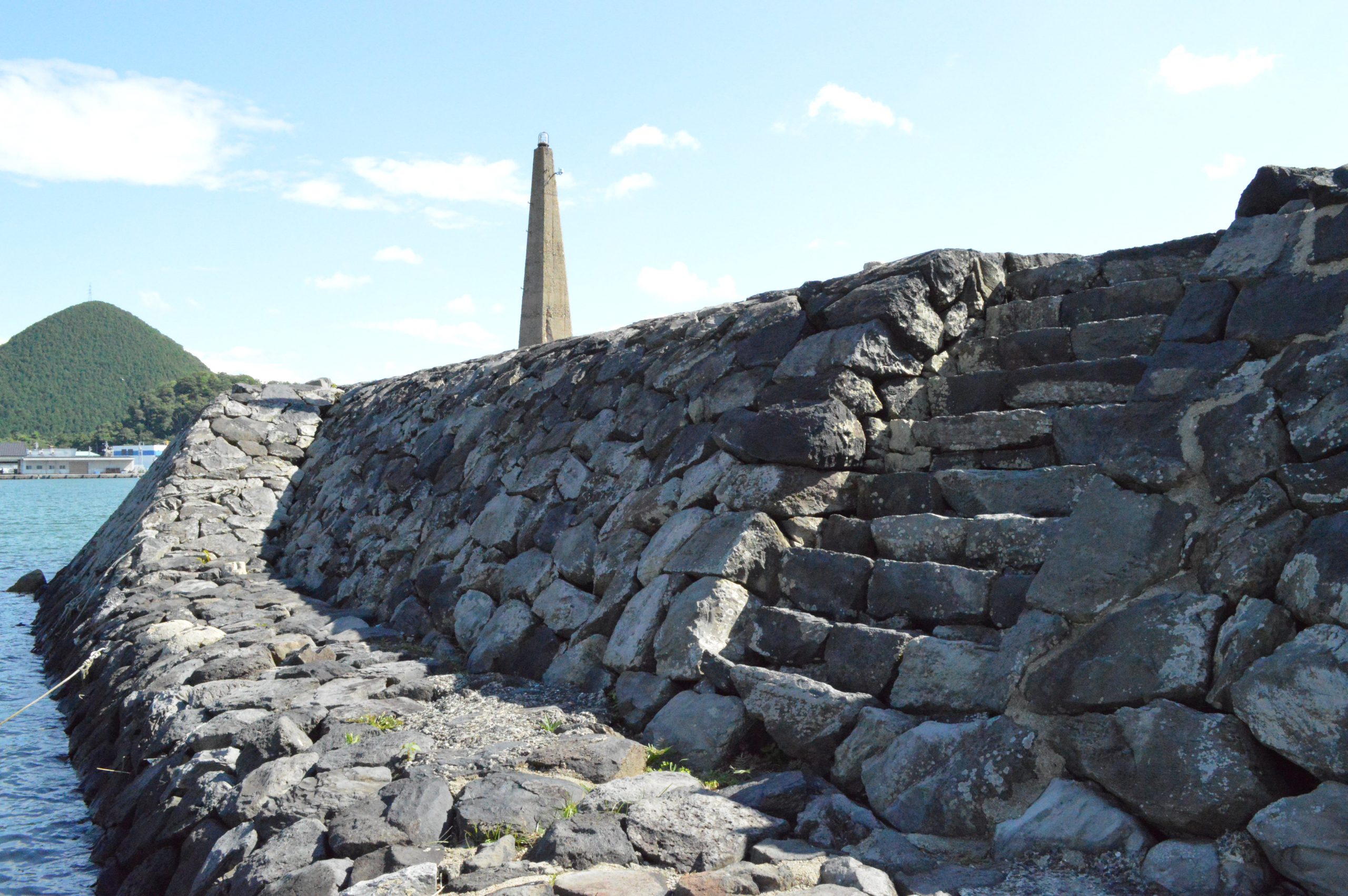
In 1853, the Tokugawa Shogunate lifted a ban on the building of large ships in order to reinforce its armaments and the coastal defense of each domain, and subsequently, the Hagi Domain was also requested to build large ships. In 1856, Ozaki Koemon, a master shipwright of the domain, and others decided to construct the shipyard at Ebisugahana in Obataura. In December of the same year, the first Western-style warship the “Heishin Maru” was launched, and in 1860, the “Kōshin Maru” was launched. It was confirmed that in building the “Heishin Maru,” iron mined at the Ohitayama Tatara Iron Works was used. Even now the big breakwater still remains unchanged in scale from the Edo period.
Ohitayama Tatara Iron Works
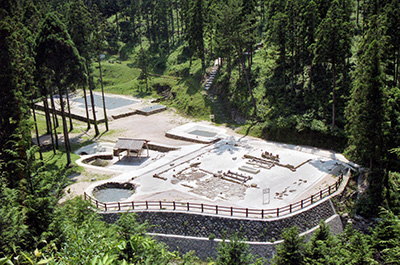
The remains of an iron works which produced iron by melting the raw material ironsand, with the heat produced by burning charcoal. In a traditional Japanese method of making iron, a bellows was used to feed air to the ironsand and charcoal in the furnace. This method of ironmaking is known as “tatara”. Ohitayama Tatara Iron Works operated three times; from 1751 to 1764, 1812 to 1822 and 1855 to 1867.
Hagi Castle Town
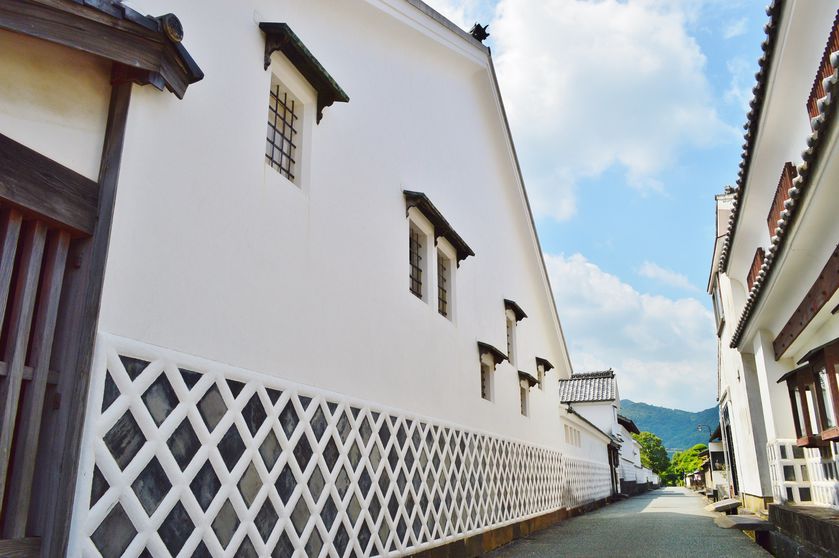
During the early stage of the introduction of industrial technology, technologies were characteristically developed within local communities under the guidance of the feudal clans which governed each domain. Mōri Terumoto who lost in the battle of Sekigahara in 1600 constructed Hagi Castle, and Hagi Castle Town was also systematically constructed. The districts where samurai and merchants lived was strictly divided, and Hagi prospered as the center of politics, administration and economy of the Hagi Domain for the next 260 years.
Shoukasonjuku Academy
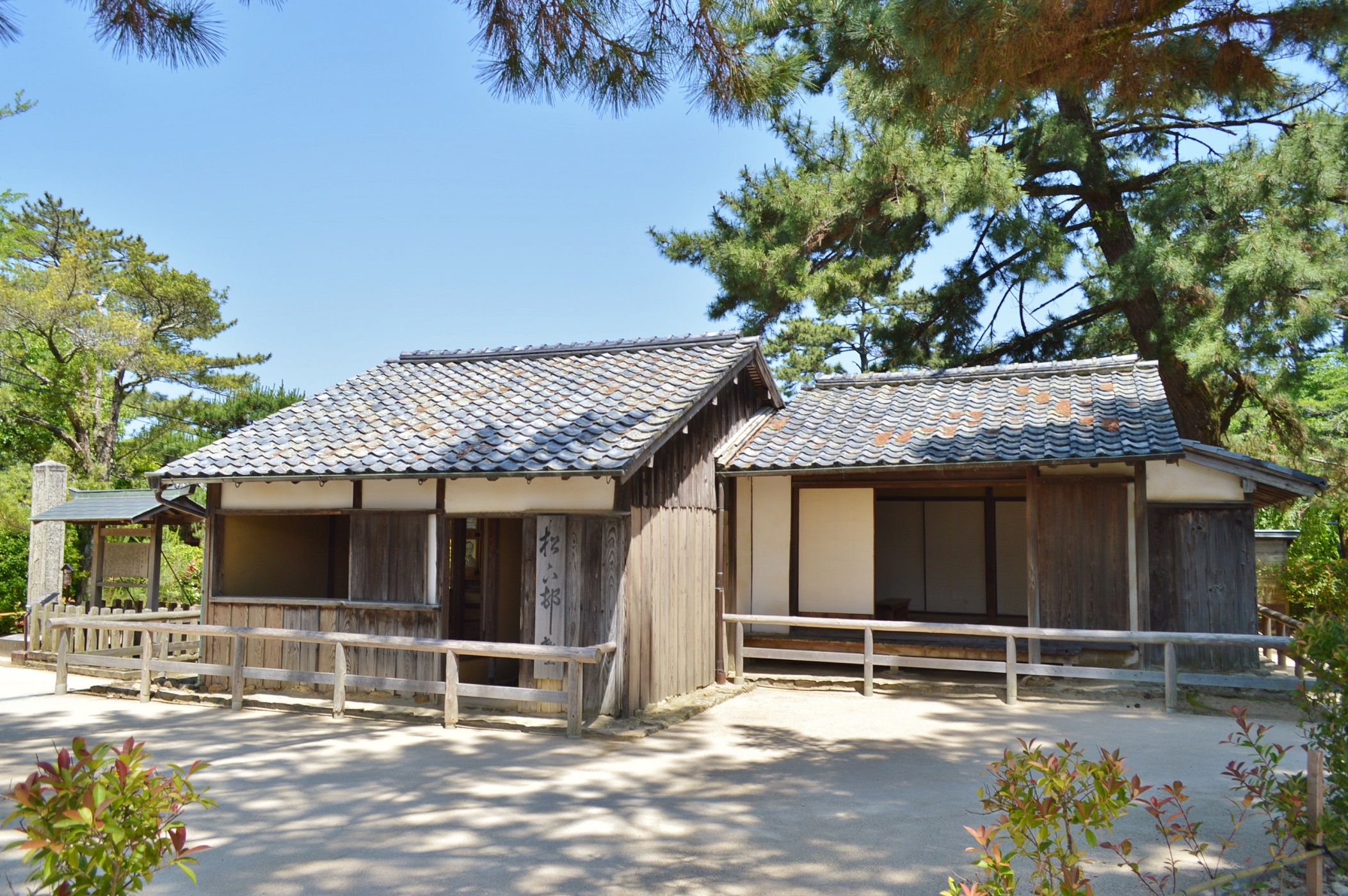
Shoukasonjuku Academy was a private school headed by Yoshida Shōin, a scholar of military science of the Hagi Domain. It is a small one-story wooden house of 50㎡ with a tiled roof, divided into a lecture room of 8 mats (13.2㎡) and a waiting room of 10.5 mats (16.5㎡). He started giving lectures to his students in 1856, then moved to the extant schoolhouse in 1857. Takasugi Shinsaku and Itō Hirobumi were also students of this academy, and many talented graduates who played important roles in the industrialization of Japan studied at this academy.
The ChoshuFive
Five samurai from the Hagi domain who took up the challenge of Japanese modernization
In the middle of the 19th Century, the world surrounding Japan had suddenly changed due to the advance into East Asia by Western powers after the Industrial Revolution. Japan was especially threatened by the arrival of Matthew PERRY’s squadron which demanded the opening of the country in 1853.
On 10th May 1863, the feudal domain of Hagi executed a command to fire upon foreign ships passing through the Kanmon Channel in order to keep out foreigners. On the other hand, Hagi also secretly dispatched five young samurai to the UK via the port of Yokohama against the closed-door policy by the Tokugawa shogunate on 12th May 1863. The Tokugawa shogunate had prohibited Japanese from going abroad during the Edo period. The most famous person to violate this law was Shoin Yoshida, a samurai from Hagi. He tried to go to America in 1854 in PERRY’s black ship but he failed. It was a desperate act for a Japanese to stow away because it was punishable by death at the time.
These five young samurai firmly resolved to be “living instruments” in order to learn naval strategies before leaving Japan. They believed that the exclusion of foreigners was the best way to protect Japan from the threat of Western powers.
They changed their minds in the UK, however, realizing that the Western powers were incomparable to Japan. They decided to accept a policy of opening the country to foreigners and introducing modern Western civilization with the aim of strengthening Japan.
These five young samurai accomplished a remarkable achievement as leaders of various fields in order to build a modern Japan. They are now referred to as the “Choshu Five” in admiration to their contributions.
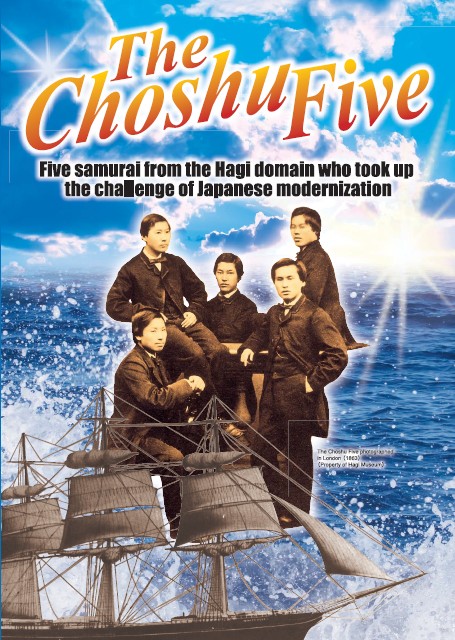
Download(PDF/3.4MB)
